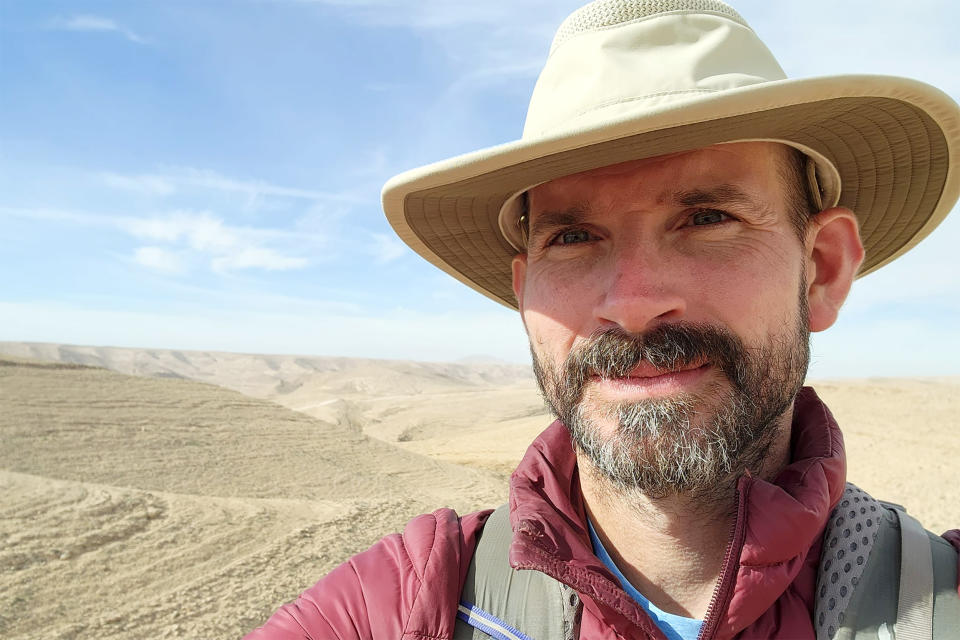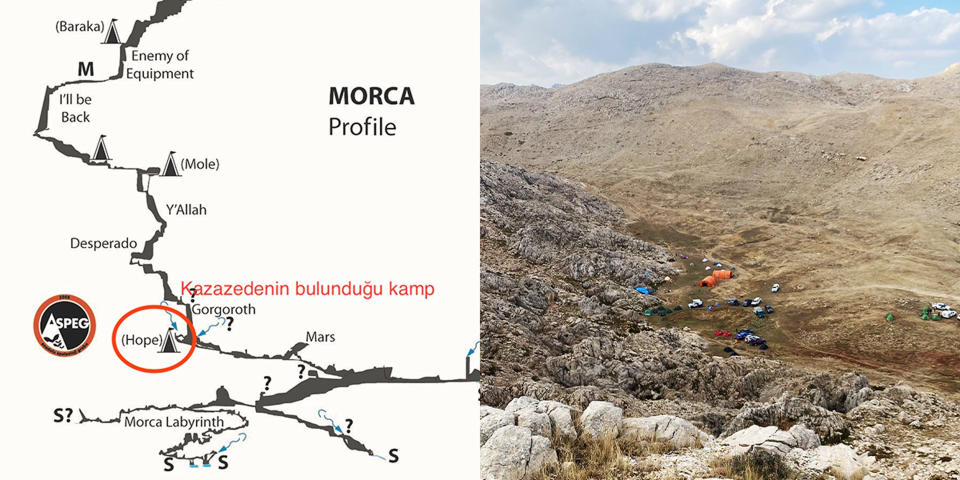Rescuers race to save ill American stranded deep inside a cave in Turkey
More than 150 rescuers are racing to reach an American stranded deep inside a cave in Turkey after he became ill.
Mark Dickey, 40, is suffering from gastrointestinal bleeding — but he has been stuck several thousand feet below the ground inside the vast Morca cave since Saturday.
The Turkish Caving Federation, which is assisting in the rescue, said Dickey was at a campsite 3,400 feet from the entrance to the 4,100-foot cave, the third-deepest in the country.
The federation said Wednesday that his condition was stabilizing and that the bleeding had stopped. He can walk with assistance, but needs a stretcher to be removed from the cave, it said in a statement.
“The operation is logistically and technically one of the largest cave rescues in the world,” said the caving federation, which is working with the Turkish government.

A friend of Dickey’s and a fellow caving enthusiast told NBC News on Thursday that Dickey has told rescuers he intends to climb out of the cave himself — but he warned that to do so is the underground equivalent of climbing Mount Everest.
“You can’t say strenuous enough. Mark is an elite caver, there’s only a couple thousand people of his caliber in the world who are doing really deep systems like this with the technical rope skills and the physical ability,” said Carl Heitmeyer, public information officer for the New Jersey Initial Response Team.
It could be another week until Dickey makes it to the surface, he estimated.
Heitmeyer explained that Dickey started to feel ill Saturday, began to cough and found blood in his stools. Dickey was unable to eat and was semiconscious for three days, he said.
Turkey’s Disaster and Emergency Management Authority, part of the Interior Ministry, said it had teams on standby and was working in coordination with the Turkish Caving Federation.
Rescuers were setting up rope lines Wednesday as part of the rescue effort. The National Cave Rescue Commission, based in Alabama, said on Facebook early Thursday that multiple rescue teams are working at the site.
“More cave rescue teams are arriving, and they are dividing the cave up into sections. Different teams are helping to rig those sections,” the group said.
Dickey was with his fiancée, Jessica, also a caver, but Heitmeyer said Thursday that she was going to exit the cave ahead of Dickey’s rescue.
Dickey is an instructor with the National Cave Rescue Commission, and he has been for 10 years, said Gretchen Baker, the group’s national coordinator. He was co-leading an expedition to find and map a new passage in the cave, she said.
He fell ill at a depth of around 3,674 feet, the Turkish Caving Federation said, before being moved to the group’s base camp at around 3,412 feet.
Dickey is being cared for by doctors, his parents, Andrew and Deborah Ann Dickey, said in a statement. They declined to be interviewed.
“Mark is strong, but he needed his fellow cavers, including, of course, the doctors, to allow a devastatingly scary situation to turn positive,” they said.
“Our prayers are being answered and we cannot express how much that means, and will always mean, to us,” they added.

Units of blood were delivered to Dickey this week, according to the Turkish Caving Federation. It said the operation to remove him and the stretcher was expected to be complex and lengthy, adding that it takes around 15 hours for an experienced caver to reach the surface in ideal conditions.
“It’s still expected to take quite a few days to get him all the way out of the cave, as it’s such a difficult and technical cave and he is so far deep in it right now,” Baker said in an email Wednesday evening.
Heitmeyer said that the process of getting in and out of the cave — which is in the Taurus Mountains in southern Turkey — was a challenge to even experienced cavers at the best of times.
“The cave is mostly vertical, but it doesn’t go straight down, there are turns in the rope and that complicates things. It makes the climbing more difficult and it just takes time,” he said.
“There’s water in-feeding from two points near the top of the cave and some of the passages are filled with water, and there are tight squeezes and corkscrews where you have to turn your body in certain way.”
This article first appeared on NBCNews.com.
This article was originally published on TODAY.com

